Are you tired of the same old ways of cutting PVC pipes? Look no further, because we have the solution that will revolutionize your DIY projects! This blog post will dive deep into the world of cutting PVC pipes with a Sawzall. Yes, you heard it right – a Sawzall can do wonders when it comes to tackling PVC. So, if you’re ready to get the job done right and take your DIY skills to the next level, keep reading because we have all the information you need to know. Say goodbye to the traditional methods and say hello to a new era of precision and efficiency. Get your gloves on and let’s dive into the world of PVC cutting with a Sawzall!
Can You Cut PVC With a Sawzall?
To get started cutting PVC pipe with your Sawzall, you’ll need to select the right cutting blade for the job. A metal-cutting blade with teeth made from hardened steel is ideal for cutting PVC piping. Additionally, blades with more teeth per inch will make smoother cuts than those with fewer teeth per inch, so choose a higher tooth count if you can.
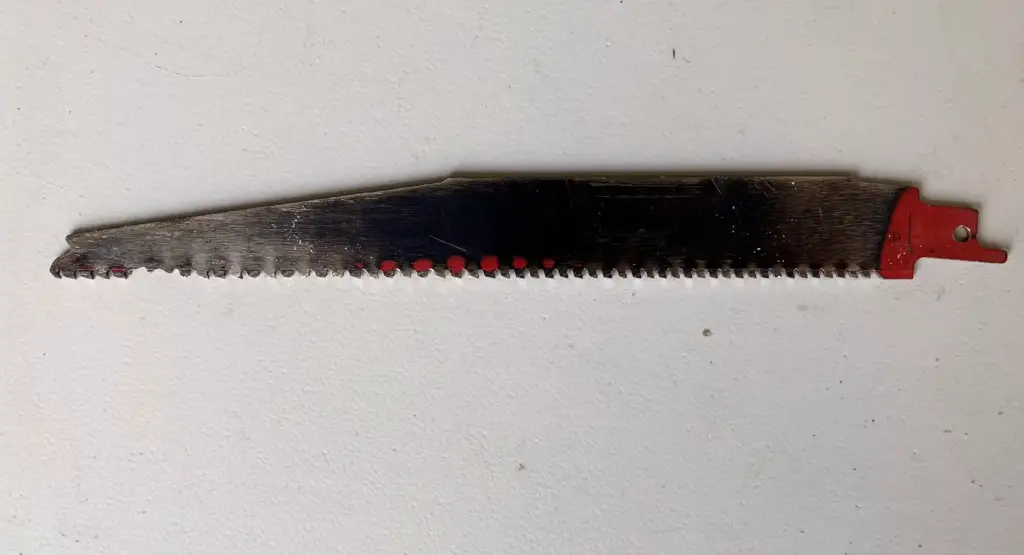
Once your blade is chosen and installed, it’s time to prep your work area and pipe. Before you start cutting, make sure any burrs or protrusions on the pipe are sanded down. This will help your blade glide smoothly through the material without catching or snagging, giving you a clean cut. Additionally, secure your work surface and any clamps so the pipe won’t move when it’s being cut.
Now that everything is prepped it’s time to start sawing. Place your Sawzall blade against the marked line on the pipe and slowly pull the trigger, letting the blade do the work. As you cut, keep the speed steady and make sure to support any long cuts with a piece of scrap wood or other material so that it won’t bow out under pressure from the saw.
Cutting PVC Pipe Straight with Sawzall
Materials You’ll Need
To effectively cut PVC pipe straight with a Sawzall, you’ll need:
- A Sawzall
- A drill and bit for pre-drilling holes
- Clamps to hold the PVC pipe in place while cutting
- Utility knife or hacksaw blade
- File or sandpaper to smooth edges after cutting
Step 1: Choosing a Sawzall Blade
When choosing a Sawzall blade for cutting PVC pipe, it is crucial to select the appropriate type of blade. The most suitable blades for this task are bi-metal blades, known for their exceptional durability and resistance to heat generated by friction. Bi-metal blades combine the toughness of high-speed steel with the flexibility and heat resistance of cobalt, making them ideal for prolonged use on PVC pipes. Another option is a carbide-tipped blade, primarily designed for cutting through harder materials like metals or ceramics. However, due to their hardness, carbide-tipped blades may not be as efficient or long-lasting when used specifically for PVC pipe cutting.
Step 2: Take Measurements
Before embarking on the cutting process, it is crucial to take precise measurements. Carefully measure and mark the exact location where you need to cut the pipe, utilizing a measuring tape and either a utility knife or a permanent marker. This meticulous approach will greatly contribute to the accuracy and precision of your cuts, ensuring that they are perfectly straight and even. By paying attention to these meticulous details, you can confidently proceed with your project, knowing that every step has been taken to achieve the best possible outcome.
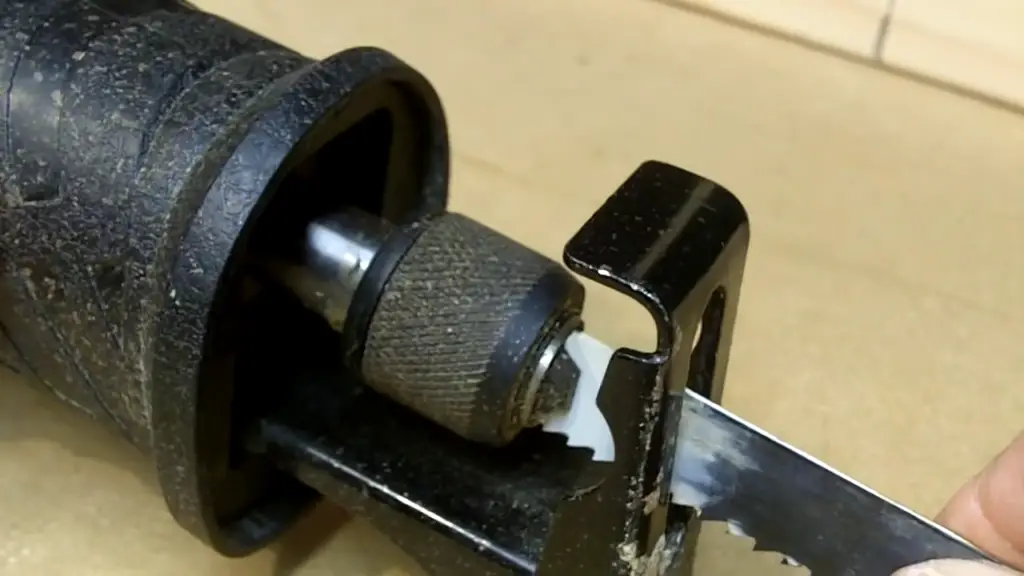
Step 3: Secure Hose Clamps
To ensure that the pipe is tightly secured and remains completely still during cutting, it is recommended to use hose clamps to hold it in place. The clamps must be securely tightened; otherwise, the pipe may shift or move which can lead to inaccurate cuts. Once the clamps have been affixed, you can begin drilling pilot holes at each end of your markings, to make the sawing process easier.
Step 4: Take Safety Measures
Before you begin sawing, it is crucial to take all necessary safety measures to ensure a safe working environment. Make sure to wear high-quality protective gear, such as sturdy gloves, impact-resistant goggles, and a reliable dust mask. This will not only shield your hands from the intense heat generated by the friction between the blade and the pipe but also provide comprehensive protection against any potential debris or dust that may pose a risk to your eyes or respiratory system.
Moreover, it is highly recommended to double-check and ensure that the clamps are securely in place, as this will further enhance the stability and safety of the cutting process. By diligently following these precautions, you can confidently proceed with your sawing task, knowing that you have taken every possible step to safeguard yourself and maintain a hazard-free work environment.
Step 5: Apply Lubricant
To reduce the amount of friction between the blade and PVC pipe, it is highly recommended to apply a suitable lubricant. This will not only help minimize heat buildup but also make the sawing process smoother and more effortless. By doing so, you will not only preserve the longevity of your Sawzall but also ensure precise and accurate cuts along your marked lines. So, before you begin cutting, take a moment to generously apply the lubricant to enhance the performance and efficiency of your sawing experience.
Step 6: Secure PVC Pipe
As a last precautionary measure, it is always advised to secure the PVC pipe in place using an additional clamp or two. This will not only ensure that the pipe does not move during cutting but also provide added stability and accuracy for your cuts. Therefore, take a few moments to double-check your work by positioning any additional clamps along the marked lines, ensuring that everything is as secure and stable as possible before you begin sawing.
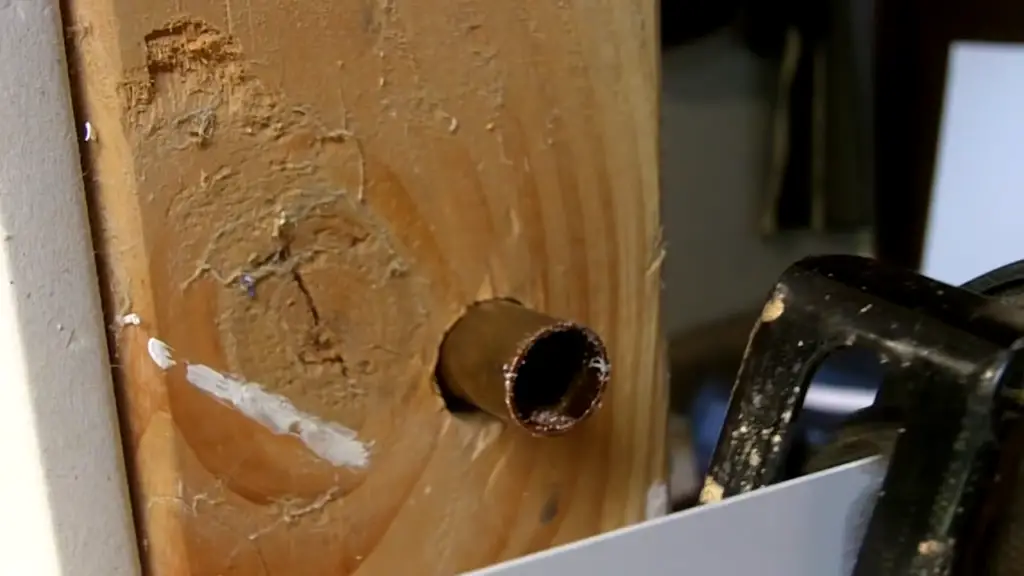
Step 7: Start Sawzall
Now, you are ready to put your Sawzall into action. Place the blade at the marked line and make sure that it is positioned securely in place before you begin sawing. As soon as you feel comfortable and confident with the blade’s position, press firmly on the trigger and start slowly sawing through the pipe. To minimize friction buildup, remember to apply a steady and consistent pressure, allowing the saw to cut at its own natural rate.
Step 8: Start Cutting
Once the saw has been properly positioned and secured in place, you are ready to start cutting. Start by slowly pushing the blade along the marked line while keeping a firm grip on both the tool and pipe. Make sure to apply an even pressure throughout, as this will help prevent any friction or heat buildup from occurring. If needed, stop periodically to adjust your blade position and ensure that it is still aligned with the initial marked line.
Step 9: Making the Final Cut
When you’ve reached the end of your marked line, take one final moment to double-check your work. Carefully examine both ends of the cut to make sure that they are perfectly straight and even. If necessary, use a file or sandpaper to smooth out any bumps or uneven edges, before proceeding with your project. By taking this extra step to ensure accuracy, you can rest assured that the final product of your work will be professional and aesthetically pleasing [1].
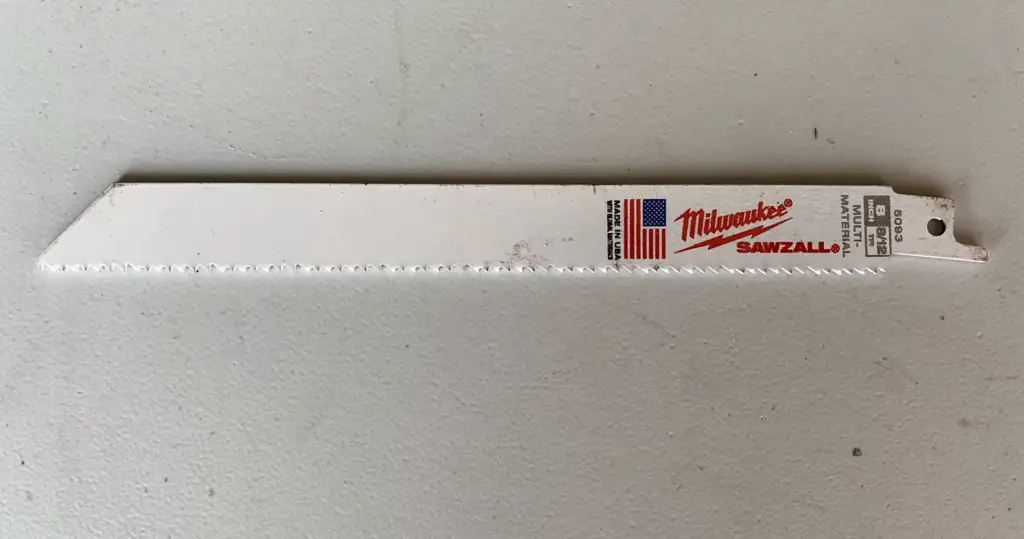
Tips of Using Sawzall to Cut PVC Pipe
PVC pipes are common in many home improvement projects, and the Sawzall technique is one of the most effective ways to cut them. Here are a few tips for getting the best results when using a Sawzall to cut PVC pipe.
- Mark your cutting lines clearly before starting. Use a marker or other tool that will stand out against the pipe material and make sure you leave plenty of room for error.
- Secure the pipe in a vise or other support to keep it steady while you cut. This will help ensure that your cuts are clean and even.
- Use a blade with plenty of teeth per inch (TPI), as this will provide the best results when cutting through PVC4. Take your time when cutting and keep the cutting speed steady. Avoid pushing the blade too hard, as this can cause it to overheat or even break.
- When you’re finished with your cuts, use a file or sandpaper to smooth any rough edges left behind by the saw.
By following these tips, you can successfully use a Sawzall to cut PVC pipe and ensure that your projects turn out just as you intended. With patience and proper technique, you’ll be able to get the job done right the first time [2].
Benefits of Using a Sawzall
The Sawzall technique, renowned for its excellence in cutting PVC pipes, presents a myriad of advantages. Firstly, its efficiency surpasses that of traditional pipe cutters, making it a faster and easier alternative. Not only that, but its precision is unparalleled, enabling you to execute meticulous cuts that are practically indistinguishable from those done by seasoned professionals. Moreover, Sawzall’s versatility shines through as it effortlessly cuts through various materials, rendering it an indispensable and adaptable tool for any DIY enthusiast or professional alike.
Finally, because the Sawzall does not require any special blades or attachments to cut PVC, it can be used with a single blade for all of your cutting needs. This saves both time and money, making it an economical choice for any home improvement project.
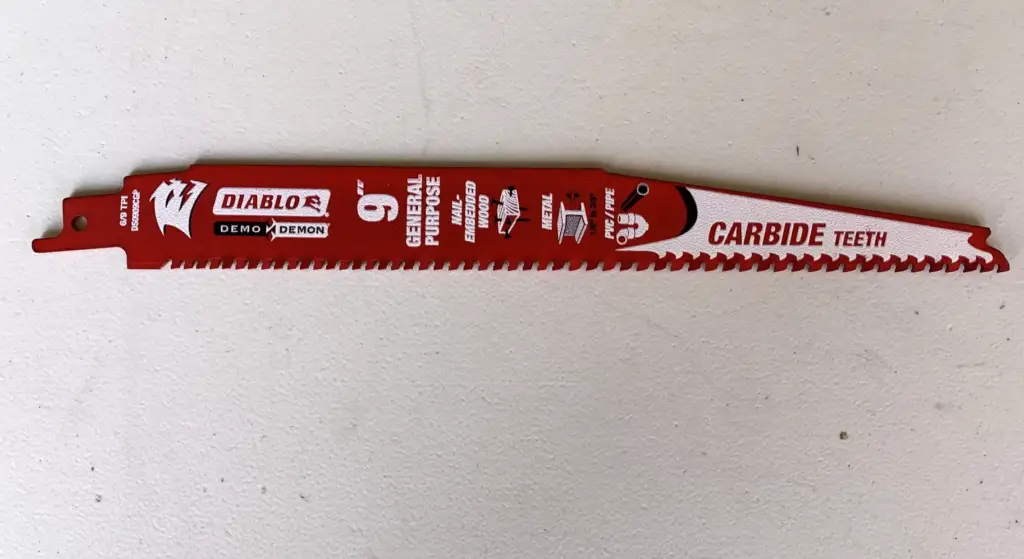
FAQ
How do you cut PVC straight with a Sawzall?
When cutting PVC pipe with a Sawzall, it’s important to use the proper technique. Start by marking the cutline on the PVC pipe and clamping it securely to your work surface. Then, make sure that you’re using a good quality blade specifically designed for cutting plastic —other blades won’t give you an accurate cut.
After you’ve selected the right blade, position it so that the cutting teeth are horizontal to the pipe and start cutting. As you cut, keep your Sawzall perpendicular to the work surface and move it slowly back and forth along the marked line. This will give you a straight, clean cut with minimal wastage. Once you’re finished, use sandpaper to smooth any rough edges. With a bit of practice, you’ll be making perfect cuts in PVC pipe every time!
What are the advantages and disadvantages of using a Sawzall?
The main advantage of using a Sawzall is that it’s fast and efficient —you can make precise cuts quickly and with minimal effort. This makes it an ideal tool for cutting through tough materials like PVC pipe. However, there are a few drawbacks to using a Sawzall. For one thing, the blades can become blunt quickly if they’re not of good quality — which means that you may have to replace them often. Plus, the vibrations from the Sawzall can make it difficult to keep the cut straight.
What kind of saw cuts through PVC?
When it comes to cutting through PVC, there’s no better choice than a Sawzall. Designed specifically for this purpose, a Sawzall provides the precision and power needed for efficient cutting. While hand saws or jigsaws can be used for smaller cuts, they often fall short of delivering the accuracy and strength required for thicker PVC pipes. With its specialized design and superior cutting capabilities, a Sawzall ensures not only an accurate finish but also the ability to tackle even the toughest PVC cutting tasks with ease. So, if you’re looking for a reliable saw that guarantees optimal results, go for a Sawzall!
What kind of blade should I use when cutting PVC?
The best blades to use when cutting PVC pipe are those that are specifically designed for this purpose. A good quality, carbide-tipped blade will make accurate cuts without the risk of them becoming blunt quickly. It’s also important to choose a blade with a suitable tooth count for your job — fine-toothed blades are better suited to more intricate cuts, while coarse-toothed ones work best for larger pipes. Whatever type of blade you choose, make sure that it is compatible with your Sawzall. With the right blade in hand, you can be sure of getting the job done quickly and accurately!
What is the best Sawzall blade for cutting plastic?
The best Sawzall blade for cutting plastic is one that has a high-quality, carbide-tipped design. Such blades are specially designed to provide maximum accuracy and longevity when it comes to cutting plastics such as PVC. Also, make sure that the blade has a suitable tooth count — fine-toothed blades work better for more intricate cuts while coarse-toothed blades are better for larger pipes. With the right blade, you can be sure of getting optimal results every time!
How do I cut curves with a Sawzall?
When cutting curves with a Sawzall, it’s important to use the correct technique. Start by marking the curve on your material and clamping it securely to your work surface. Then, choose a blade that has at least 8 teeth per inch — this will ensure smooth, accurate cuts. Position the blade so that it is parallel to the material and then start cutting with slow, steady strokes. Make sure to keep the Sawzall perpendicular to the work surface as you cut in order to get a clean curve line.
Conclusion
So, it is really possible to cut PVC with a Sawzall with the right technique. By using a combination of blades and blade guards, as well as proper preparation of the PVC pipe, you can cut through it with ease and accuracy. It is important to be careful when using this tool and to make sure that you follow all safety instructions for its use. If done correctly, this can be an effective way to quickly get through tough jobs
References
- https://homeguidecorner.com/how-to-cut-pvc-pipe-straight-with-sawzall/
- https://sawshub.com/how-to-cut-pvc-pipe-straight-with-sawzall/






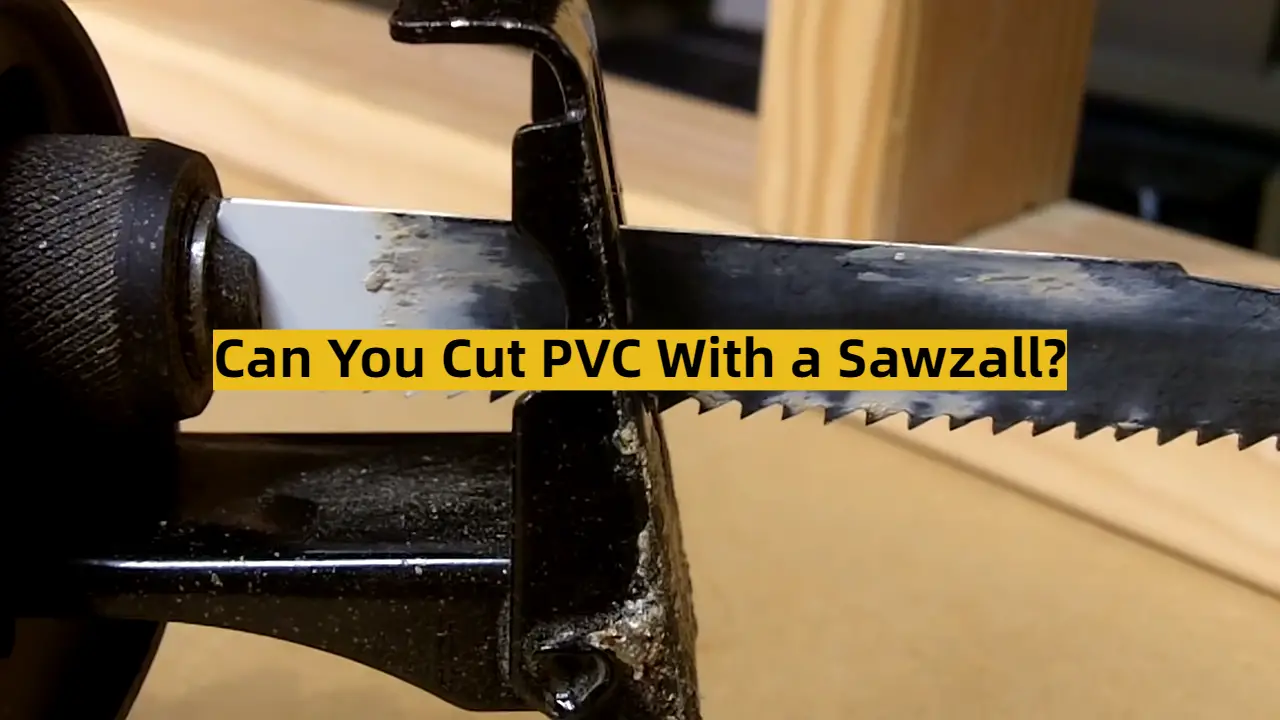








Leave a Reply